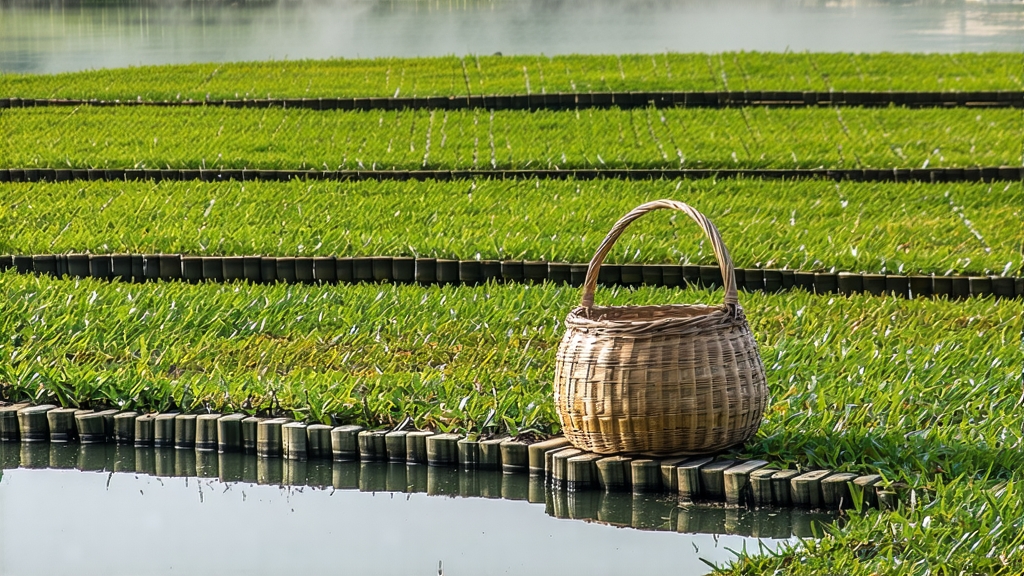
Longjing—often spelled Lung Ching in older Western texts—is the single green tea whose name alone can hush a noisy Chinese tea-house. It is not merely a leaf; it is a landscape pressed into a blade, a millennium of Hangzhou memory that unfurls in a glass of pale jade. To understand China’s green teas one must begin here, on the western shore of West Lake, where the hills fold like sleeping dragons and the spring rain arrives on the same calendar day as the Qingming festival.
History: from temple to tribute
Buddhist monks planted the first bushes on Shi-feng peak during the Song dynasty. By the Ming, the imperial court had claimed the crop; the Qianlong Emperor, on his southern inspection tour, allegedly pocketed a handful of fresh leaf and later decreed that the eighteen bushes beside the Dragon-Well spring be reserved for the throne. Those trees still stand, ring-fenced and geotagged, their leaf auctioned annually for more than the price of gold. The West Lake Conservancy now limits plucking to the two-week window before Qingming, when amino acids peak and tannins sleep—an agricultural ritual older than Bordeaux’s en primeur.
Micro-terroirs: five peaks, five voices
West Lake Longjing is not a monolith. The legally protected zone spans barely twelve square kilometres and is subdivided into five micro-terroirs. Shi-feng (Lion Peak) gives the sweetest liquor, a fragrance of toasted soybean and magnolia. Mei-jia-wu offers a greener, more bamboo-shoot character. Weng-jia-shan is mineral, almost flinty; Tiger-Run stream adds a cool menthol echo; Ling-yin temple gardens contribute a quiet incense note. Outside this core, money and politics collide: Xihu District farms can still label “West Lake” if within the administrative line, yet connoisseurs treat them as country cousins. Further afield, Zhejiang province produces “Qiantang” Longjing; other provinces mimic the shape and roast, but the lake’s mist and quartz-rich soil cannot be freighted inland.
Cultivars: seed versus clone
The original group is the old-line Seed-Propagation stock, open-pollinated for centuries, each bush genetically distinct, yielding tiny crops of insane complexity. Since 1985 agronomists have released clonal cultivars—Longjing #43 most famous—selected for early budding, frost resistance and uniform leaf size. #43 ripens seven days sooner, allowing farmers to hit the lucrative pre-Qingming market, but it trades some of the seedstock’s lingering yun (after-rhythmn) for brighter, more accessible aroma. Purists split into camps the way Burgundy quarrels over Pinot fin vs. 777 rootstock; the wise drinker samples both.
Plucking choreography
At 5 a.m. in late March the hillside is dark, head-lamps bobbing like fireflies. Only the standard “one bud one leaf” pluck is accepted for top grade; the petiole must be no longer than 2.5 cm so that the bud lies flat against the lower leaf like a sleeping sparrow. A skilled picker harvests barely 600 g of fresh leaf during a dawn shift—enough, after firing, for 150 g of finished tea. The basket is woven from thin bamboo slats precisely to discourage bruising; any compression triggers premature oxidation and the dreaded red-edge that downgrades the lot.
Pan-firing: the eight gestures
Within two hours of plucking the leaf reaches the workshop, a low-slung brick building whose only machinery is a polished cast-iron wok set over a licking wood fire of local loquat. The master—always addressed as shifu—first “kills green” at 280 °C, tossing 250 g of leaf with bare hands for three minutes. Temperature drops in three阶梯 (terraces) to 80 °C as the leaf is shaped by eight classic hand gestures: grasp, shake, rub, throw, fan, press, push, and the final “tremble” that sends each shoot clicking against the wok like rain on a tin roof. The entire cycle lasts twenty-five minutes; moisture falls from 75 % to 6 % while amino acids lock into the characteristic flat sword shape. A veteran can process 3 kg per day; apprentices spend three years learning not to burn their fingerprints off.
Calibrating the roast: green vs. chestnut
Some drinkers prefer a “green” style, pulled from the wok earlier